

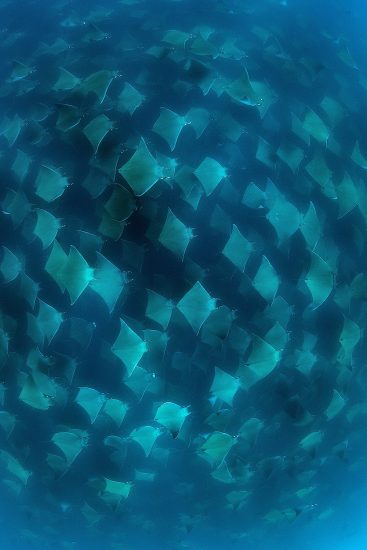
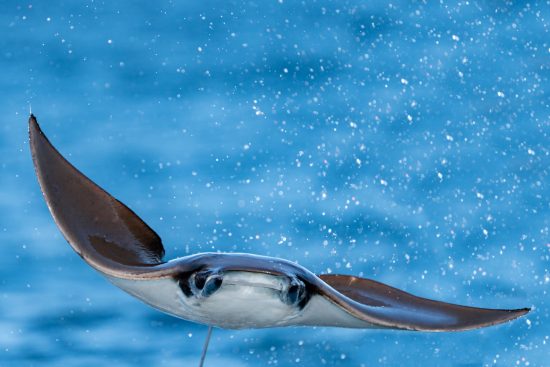
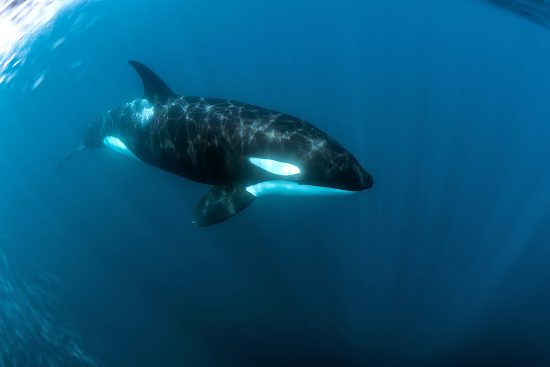
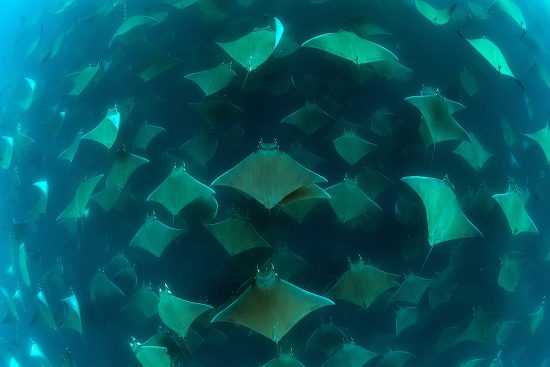
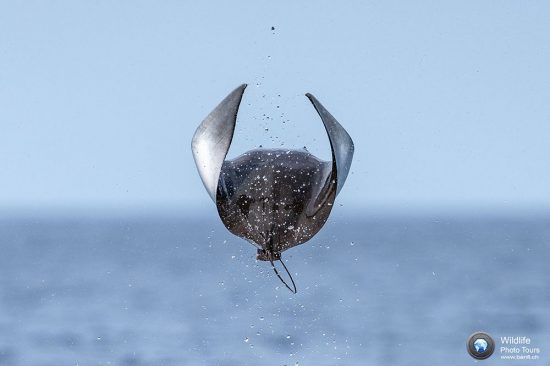
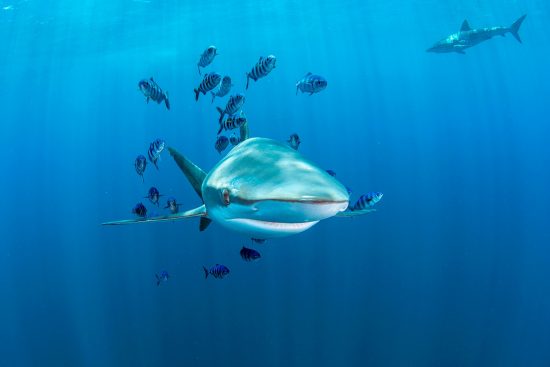
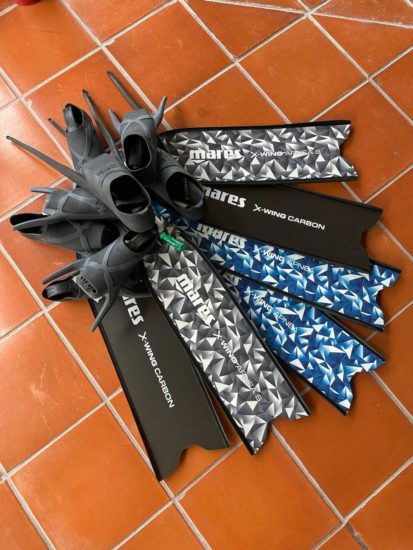
Imagine swimming above thousands of small Munk’s Pigmy Devil rays (mobula munkiana) gliding slowly in warm water. You cannot see the beginning or the end of the massive squadrons moving along the south-west region of the Gulf of California, just an endless flow of rays dancing. They are unique and unbelievably graceful, with their mouths spread open looking for food, full of energy as they speed towards the motionless surface one upon the other, doing aerial twirls and splashing down in to the water again. Little is known about these acrobatic, hypnotic small elasmobranchs except that they have strong aggregative behaviour, low fecundity and delayed reproduction.
Studies have revealed that there are nursery areas in the Sea of Cortez where juveniles spend half of the first year of their lives. These areas offer protection and abundant food resources.
Nobody knows why Munk’s Devil rays launch themselves into the air and spin out of the water before slapping back on to the surface. This has earned them the nickname “popcorn rays”. They might do it to get rid of parasites, as part of the courtship and reproduction process, for communication or for other reasons - it is still a fascinating mystery.
In Spring, the waters of the south-west coast of the Sea of Cortez become the scene of unbelievable natural events, teeming with Mobula munkiana. It is not possible to estimate their number - the flow is endless and the mass can easily block the natural light of the strong sun in the water.
Freediving and snorkelling above a giant schools of rays as if they were squadrons of birds flapping their long wings underwater is an experience not to be missed. Everything happens quickly, and you must be ready to seize the moment. The right gear is mandatory to avoid any last-minute issues. We strongly recommend the extremely light, elastic Horizon 0.5mm wetsuit to protect your skin from the sun's strong rays, and freediving fins. We enjoy the new Apnea X-Wing fins (carbon or fiber, longer or shorter) as well as the famous Razor, Razor Pro and Razor Carbon models. The choice is vast and all of them work great: you'll be spoilt for choice!
We must be ready at all times as Mother Nature is astonishing. In Spring, orcas arrive - we have seen adult orcas teaching the youngest members of the group how to hunt, teaching them their roles in the group, where to stay and how to help each other. These are essential lessons for the juvenile orcas if they want to survive when they leave the unit. They can be cruel (as nature can be). To our human eyes, it seems that the killer whales are playing with their prey (like cats with mice), injuring them but leaving them alive, so that the juveniles can try and learn from their mistakes.
To see more about our activities, don't forget to follow us on our webpage , Facebook and Instagram, or sign up for our newletters.
 Franco and Sabrina
Franco and Sabrina 10th March 2022
10th March 2022